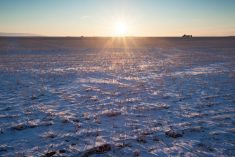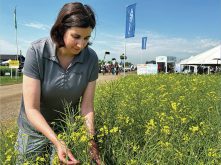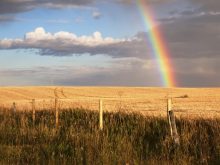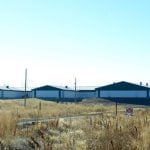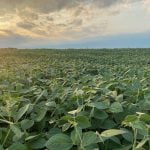Drought is now the operative word in major areas of Prairie farming for 2021. The drought in this area started on July 8, 2020, and has been interrupted by only two significant events — the big snow and blow of November 7 and 8 last year and the welcome May 2021 long weekend rain of 1.75 inches. It was a nice slow rain that all soaked in. The effective seeding date for many crops in this area is May 24, as the seed lay in the dust until then. The May rain helped crops get out of the ground but not much else.
Read Also

Seasoning for Korea’s culinary wave
Not unlike K-pop, Korean cuisine has become part of the international cultural tidal wave called Hallyu, Saskatchewan chef and writer dee Hobsbawn-Smith says.
At time of writing on June 10, rain is on the way but much more will be needed to provide a good crop.
In the February 2 issue of this year, we talked about snow and what it might do for us. Decades of literature was reviewed and the take-home message was 1) tall canola stubble will be the best snow-catcher and 2) dry soil at freeze-up will allow snowmelt to infiltrate with little or no runoff.
Field scouting 2021
Folks doing field scouting at flag leaf or heading stage in 2021 should be prepared for some hard-to-diagnose crop variations in fields. The crop could look very good in one place and very poor not far away, with no specific symptoms except stunted growth. Soil probing will show no difference because the the good-looking crop will have used up the moisture that made the difference.
What follows are my observations with the soil probe and shallow water wells this spring.

Level or gently rolling fields
On canola stubble, the top 12 to 15 inches was at field capacity moisture content, which is equal to about 1.5 inches of rain — enough for germination but only for fields seeded in very early May. Wheat fields with short stubble had only six inches of moist soil and peas about the same.
Any parts of the field with even small depressions had a bit more moisture. The depressions hold more snow and, hence, more water. Most deeper sloughs have lots of soil moisture but no slough pumping was required this year.
Hilly land
On my hilly land at Dundurn, the snow landed in different places. Of course, the sloughs, poplar bluffs and farmstead were full of snow but on the lee side of some big hills snow banks were significant.
The photo to the left shows what it looked like on March 19 and what the soil moisture was on April 2.
The snow in the deep banks on the hillside added directly to soil moisture as it soaked into the dry soil as fast as it melted. The dry soil was not “frozen” so it went straight in. Of course, the soil would have been at freezing temperatures but when dry there is no water to seal up the soil pores to cause runoff.
A special case: Farm shelterbelts as snow traps, big water source
The big snow and blow of November 2020 piled in about five feet of hard-packed snow with lots of water in it. On April 15, 2021, the water table had jumped from dry (10 feet) at freeze-up to 31 inches. It dropped to 57 inches by May 22. The 1.75-inch rain on the May 24 weekend brought the water table back up to 39 inches. The rise was 18 inches, which is very near to what theory states for a medium-textured soil (i.e. one inch of rain brings up the water table about eight to nine inches).
As soon as I observed the water table in April, I knew we were in for a good crop. We picked about 200 pounds of asparagus and left more that could have been harvested.
I have never had a well in the farm garden, so I installed one on April 28, 2021. The soil was near field capacity all the way down to 10 feet and the water table was at seven feet. The May 24 rain brought it up to 6.4 feet. In the fall of 2020, I could not get the soil probe in the ground anywhere in that garden patch. This spring it goes in like butter anywhere. And all thanks to the big snow and blow of November 2020.
When checking crops this year expect the unexpected — if crop variations are hard to explain, water from snowmelt could be the reason.





